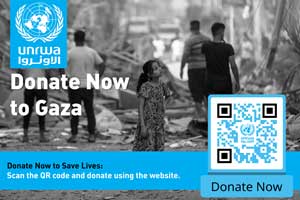You are here
Stopgap agreement
Apr 04,2015 - Last updated at Apr 04,2015
The nuclear framework agreement truck between the P5+1 and Iran on Thursday took few by surprise.
The accord that would end the 13-year standoff between the two sides dragged on for few extra days to iron out some remaining details.
The agreement, however, remains a mere framework on which more details have to be added by June 30, when a final agreement could be signed.
The details remain cloudy: Iran will gradually see the crippling sanctions against it lifted in return for “drastic” cuts in its nuclear programme, coupled with strict monitoring of its nuclear facilities.
Tehran also agreed to cut the number of operating centrifuges by two thirds, i.e., to 6,104 from 19,000, and reduce its stockpile of low enriched uranium from 10,000 to 300 over a period of 15 years.
The inspection of Iran’s nuclear programme can be carried out “anywhere in the country”, which is an important Iranian concession.
At the same time, Iran committed to end all uranium enrichment at its Fodrow facilities for 15 years.
What this preliminary agreement amounts to is a stopgap measure with a limited lifetime.
The agreement prevents Iran from racing to acquire the nuclear bomb in less than one year. No big relief.
Sooner or later Iran will come to possess the nuclear bomb and other major regional capitals, including Riyadh, Ankara and Cairo, may also decide that they want the bomb.
Conspicuous in the deal is the absence of any constraints on Iran’s expansionist policies in the region.
Tehran said it right at the outset that the agreement deals only with the nuclear issue and has nothing to do with Iran’s domestic, regional and international policies.
With sanctions lifted, Iran can flex its muscle in the region even more, no doubt.
Still, the deal is better than nothing. Without it, Iran can race to acquire nuclear weapons much sooner.
There is still hope that Iran could evolve after this “historic” accord into a more self-confident and moderate nation that can play a more constructive role in the resolution of the many festering conflicts in the Middle East.













